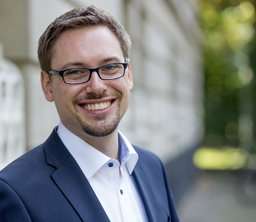Forschungskolloquium des IWS: Asymmetric Similarity Measurement for Changes in Scientific Concepts
Vortrag, 27. November 2018
Das Forschungskolloquium Informationswissenschaft richtet sich an alle Hochschulangehörigen (Professoren, Mitarbeiter, Studierende) sowie an externe Teilnehmer, die an den Arbeits- und Forschungsbereichen des Instituts für Informationswissenschaft Interesse haben. Ziel des Kolloquiums ist es, aus aktuellen Forschungsvorhaben, Projekten oder Kooperationen zu berichten.
Auf einen Blick
Dr. Mohammad Tavakolizadeh Ravari – An Asymmetric Similarity Measurement Model for Changes in Structure of Scientific Concepts
VortragWann?
- 27. November 2018
- 15.15 Uhr bis 16.45 Uhr
-
in meinen Kalender übertragen
BEGIN:VCALENDAR VERSION:2.0 PRODID:-//hacksw/handcal//NONSGML v1.0//EN CALSCALE:GREGORIAN BEGIN:VTIMEZONE TZID:EUROPE/BERLIN BEGIN:DAYLIGHT TZOFFSETFROM:+0100 TZOFFSETTO:+0200 TZNAME:CEST DTSTART:19700329T020000 RRULE:FREQ=YEARLY;BYMONTH=3;BYDAY=-1SU END:DAYLIGHT BEGIN:STANDARD TZOFFSETFROM:+0200 TZOFFSETTO:+0100 TZNAME:CET DTSTART:19701025T030000 RRULE:FREQ=YEARLY;BYMONTH=10;BYDAY=-1SU END:STANDARD END:VTIMEZONE BEGIN:VEVENT LOCATION:Campus Südstadt\, Claudiusstr. 1\, Raum 149 DESCRIPTION: SUMMARY:Dr. Mohammad Tavakolizadeh Ravari – An Asymmetric Similarity Measurement Model for Changes in Structure of Scientific Concepts DTSTART;TZID=EUROPE/BERLIN:20181127T151500 DTEND;TZID=EUROPE/BERLIN:20181127T164500 DTSTAMP:20260104T023557 UID:6959c3fdde1c8 END:VEVENT END:VCALENDAR
Wo?
Campus Südstadt, Claudiusstr. 1, Raum 149
Standorte
Veranstaltungsreihe
Forschungskolloquium Informationswissenschaft
ReferentIn
Dr. Mohammad Tavakolizadeh Ravari
Anmeldung
keine Anmeldung notwendig
Weitere Informationen
Abstract: “Science and technology structure” bears different meanings on different contexts, from which we concern those relations existing between objects (terms, authors, and citations) that form the structure of a scientific or technological knowledge.
The research evolution and shift could be investigated through measuring the structural change that has occurred within a keyword (term) co-occurrence network of a given field. Modern science is also conducted primarily through a network of collaborators. The groups within the co-authors' network can therefore show the structural change of knowledge areas by studying the shifts that have occurred in the collaboration of the researchers of a discipline with the others. Citation network analysis has such a function, too. The network of citations reveals what disciplines have contributed to a given discipline and somehow represent the structure of a science.
The structural change can be measured by determining the amount of moving objects (terms, authors, citations) between the corresponding groups of terms, authors, and citation networks. This can be also called as identifying and detecting "between-cluster migration of objects" and as the variation of information or the amount of information lost and gained in the span of time.
The current presentation propose an asymmetric similarity measure suitable for calculating the between-subset migration of objects (such as topics or authors) over time and also for comparing one set (such as an area) to another one (another area), both consisting of subsets having different sizes. In another words, a model is provided for determining the structural change between the subsets of objects of science and technology. A mathematical proof will be presented for this model and the model will be tested for measuring the amount of movement of index-terms between subject categories of "Project Management" area during the two time periods.

